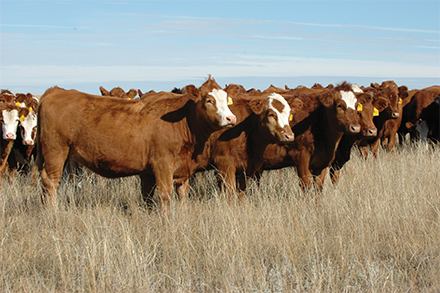Replacement Heifers
go.ncsu.edu/readext?1093133
en Español / em Português
El inglés es el idioma de control de esta página. En la medida en que haya algún conflicto entre la traducción al inglés y la traducción, el inglés prevalece.
Al hacer clic en el enlace de traducción se activa un servicio de traducción gratuito para convertir la página al español. Al igual que con cualquier traducción por Internet, la conversión no es sensible al contexto y puede que no traduzca el texto en su significado original. NC State Extension no garantiza la exactitud del texto traducido. Por favor, tenga en cuenta que algunas aplicaciones y/o servicios pueden no funcionar como se espera cuando se traducen.
Português
Inglês é o idioma de controle desta página. Na medida que haja algum conflito entre o texto original em Inglês e a tradução, o Inglês prevalece.
Ao clicar no link de tradução, um serviço gratuito de tradução será ativado para converter a página para o Português. Como em qualquer tradução pela internet, a conversão não é sensivel ao contexto e pode não ocorrer a tradução para o significado orginal. O serviço de Extensão da Carolina do Norte (NC State Extension) não garante a exatidão do texto traduzido. Por favor, observe que algumas funções ou serviços podem não funcionar como esperado após a tradução.
English
English is the controlling language of this page. To the extent there is any conflict between the English text and the translation, English controls.
Clicking on the translation link activates a free translation service to convert the page to Spanish. As with any Internet translation, the conversion is not context-sensitive and may not translate the text to its original meaning. NC State Extension does not guarantee the accuracy of the translated text. Please note that some applications and/or services may not function as expected when translated.
Collapse ▲If you decide that it’s best for your operation to raise and develop replacement heifers from your herd, it’s important to choose animals that are profitable and fit your production system. Here are some things to consider to help you in your selection decisions.
Post Weaning:
- Structural soundness, health, disposition
- Sound feet, legs, eyes are important for longevity in the herd. Rule out any heifers with severe unsoundness, are in poor health, or have undesirable disposition. Ideally heifers may have wideness and depth of body.
- When they were born in the breeding season
- Calves born early in the breeding season are older and typically heavier at weaning, meaning they should have a better chance of conceiving and calving earlier in the breeding season resulting in improved reproductive efficiency.
- Genetic merit
- Desirable/undesirable traits of the parents should be considered: hair shedding, feet and legs, udder quality. Many traits are at least somewhat heritable.
Pre-Breeding (4-6 weeks prior): Screen again for soundness, health, disposition
- Target weight
- Typically heifers should weigh 65% of mature body weight at the time of breeding. This is normally seen as a minimum weight, ensuring that heifers are developed enough for breeding and the increased nutrient requirements of calving/lactation.
- Repro tract scoring, pelvic measurements
- This additional information can be obtained by working with a veterinarian rather than solely relying on weight to determine reproductive maturity.
Post-Breeding
- Pregnancy status and date of conception
- This may be one of the most important criteria for selecting profitable animals. Heifers that calve early in their first season are shown to have greater lifetime productivity. By pregnancy checking with an ultrasound after 90 days post breeding, the date of conception can be known.
- Decisions on the open heifers can be made at this time too.
Sources:
Selecting and Developing Replacement Heifers
Tips for Selection of Replacement Heifers
Selection of Replacement Heifers for Commercial Beef Cattle Operations





